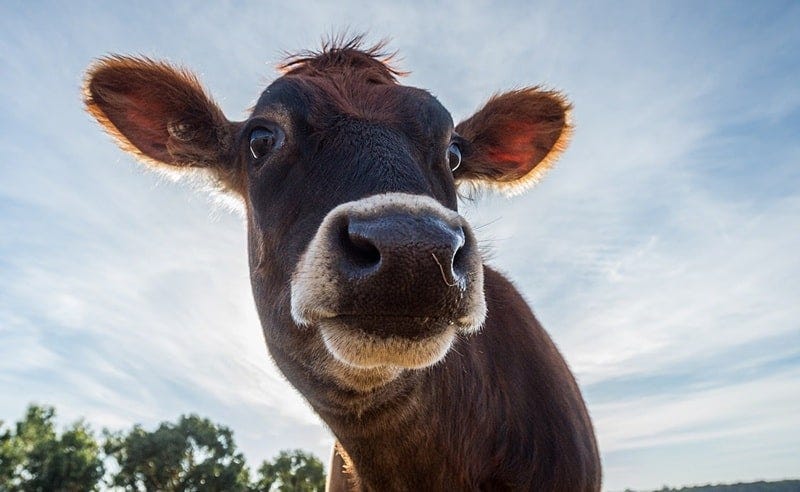SNEAK PEEK: Hot Air
Giving cows methane-inhibitors is a bad idea
In the 1960s, scientists discovered that halogenated compounds like chloroform and bromochloromethane could inhibit methane-generating microorganisms, also known as methanogens. This was important, because agricultural scientists were trying to make livestock farming more efficient. Ruminants (cows, sheep, goats, deer, also giraffes) produce methane, a gas, when they digest plant matter. Scientists reckoned between 2 and 12% of all the energy from feed was being lost as gas. If they could reduce methane production, they could increase yields of meat, milk and other products.
In an experiment carried out by Rufener et al., chloroform fed to sheep reduced methane by between 30% and 50%. The results were even more dramatic with bromochloromethane: 70%.
But there was just one problem: The halogenated compounds were toxic, and they were harming the animals and leaving residues in the meat and milk. The research was abandoned.
Fast forward to today and methane reduction has taken on a new urgency. In the intervening decades, methane has been identified as a greenhouse gas, responsible, like carbon dioxide, for causing dangerous climate change. The scientific community, governments, NGOs, charities, captains of industry, corporations, retarded celebrities and pop stars all agree that we must reduce emissions drastically to save the planet.
We’re told that about 5% of all greenhouse gas emissions come as a result of agriculture. Which isn’t actually all that much, when you think about how fundamental agriculture is to human life. Unfortunately for the ruminants of the West, efforts to focus on larger sources of emissions, like China’s insatiable hunger for “fossil fuels,” are complicated by white people’s current role as the boogeymen of history. And so livestock and their emissions—often referred to under the rubric of “cow farts”—have taken on an oversized importance in the global plan to tackle climate change.
A new generation of methane-inhibiting compounds are now being used on livestock. Some are still being tested, while others, like DSM Firmenich’s Bovaer, have already been approved for use. Bovaer is licensed for use In Brazil, Europe and, since last year, the US. The US Department of Agriculture has put aside $89 million to support the adoption of feed additives like Bovaer. Things are progressing even faster in progressive Europe. In Norway, the government has mandated that by 2027, all cows must be fed methane-inhibitors by law.
Bovaer began life in 2008 as part of DSM’s “Clean Cow” initiative, in partnership with Penn State University. More than a million molecules were scanned until one was found that bound specifically to the enzyme responsible for methane generation in ruminants; broke down in a short period of time; and left no detectable residue in the animal’s meat or milk.
DSM patented 3-nitrooxypropanol in 2010, and small-scale animal trials began over the next few years. Since then, 150 studies in 14 countries are reported to have proven, beyond a shadow of a doubt, that Bovaer reduces methane produced by cows and has no effects on their health or the quality and safety of the food they yield.
But still, there have been persistent, well-founded questions about the safety of methane-inhibitors and Bovaer in particular. The rumen—the largest of a ruminant’s four stomachs—is a marvel of natural engineering. A cow’s rumen has a capacity of up to about 200 litres, the same as your average bathtub, and contains billions upon billions of microorganisms, working in harmony to produce food for themselves and their host—and, eventually, us.
As we all should know by now, even tiny interventions in complex systems can have wildly unpredictable consequences. This insight is the basis of chaos theory—remember Jeff Goldblum’s louche Dr Ian Malcolm in Jurassic Park?—which famously posits that a butterfly flapping its wings can generate a tropical storm on the other side of the globe. Disabling an entire species of microorganism in the rumen of a cow is not a tiny intervention, however. On a larger scale, it would be like, say, killing all the wolves in Yellowstone National Park. Look up what happened when they actually did that.




